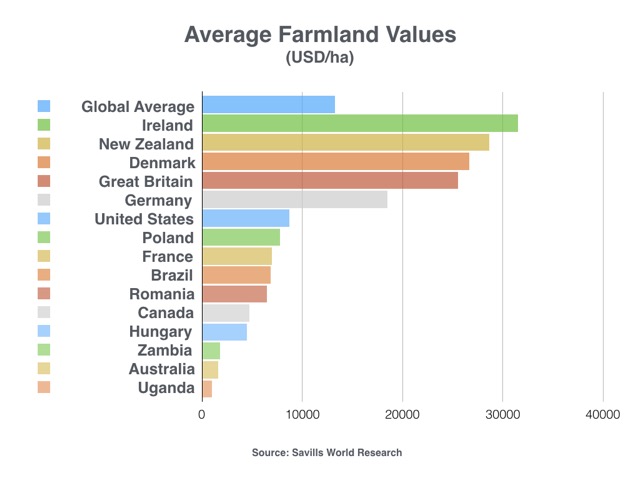According to the United Nations, investing in agriculture is one of the most effective strategies for economic growth, poverty reduction and promoting global sustainability. This type of investment will allow people and organizations to contribute to and benefit from social development projects that truly make a difference.
A perfect storm is building in global agriculture. Components necessary to ensure the required productivity hike for a growing population, such as access to suitable farmland, fresh water availability and further improvements in crop yields may not be able to deliver the required uplift. As it is, every night, 2 billion people or nearly one-third of the world’s population go to bed hungry and another 1.2 billion people do not have access to the UN’s prescribed 20-50 liters of fresh water daily. Closing this persistent poverty gap will present enough of a challenge in the decades ahead, even before factoring in adjustments to compensate for the expanding global population, dietary improvements and the pressures emanating from slowing agricultural yield improvements will add pressure.
The United Nations Food and Agricultural Organization data shows that since the beginning of this century, the price of all major food groups has more than doubled, effortlessly. A key element for this is appreciating farmland values, which rose by 50% between 2009 and 2013 in the US, and by 270% in the UK. Even in Brazil, where only 33% of the country’s prime agricultural land is currently utilized, farmland prices have risen by an average of 20% in each of the past three years. International realtors, Savills, report that their Global Farmland Index has generated an average annual price appreciation of 20% since 2002.

Good quality farmland is contracting worldwide – the UN estimates that the current rate of global arable land degradation of 12 million hectares a year (equivalent to 29.6 million acres) is 30 to 35 times the rate experienced during the mid 20th century. Growing urbanization, damage caused by chemical pesticides, deforestation, overgrazing and the impact of global warming are contributing to the process by which arable land is either built over, or soil loses its productivity and cover vegetation disappears. Farmland being lost globally is the equivalent to 40% of all arable land in California disappearing every 18 months.
Ultimately we will need a 70% expansion in global food production up to 2050 to fulfill the requirements of a population that will reach 9.6 billion. Sustainable Asset Management AG. (SAM) suggests this level of food production will lead to a 60% global increase in real food pricing.
Investing in agriculture in developing regions of the world can also create jobs and livelihoods for local farmers, while producing food and raw materials for the urban economy. Ultimately, the interdependence between agriculture and other fundamental services allows the industry to support overall economic growth in the region.
Sustainable and organic agriculture, although requiring 2.5x more labor than conventional farming, is environmentally safer, produces crops with higher nutritional value and yields on average 10x the profit.
Responsible investment in agriculture not only strengthens global food security and nutrition, particularly in developing economies, but also promotes an international standard of safe agricultural processes and technologies for the global food system. This allows global environmental health, economic profitability and socioeconomic equity to be achieved in one unified objective – feeding the world.